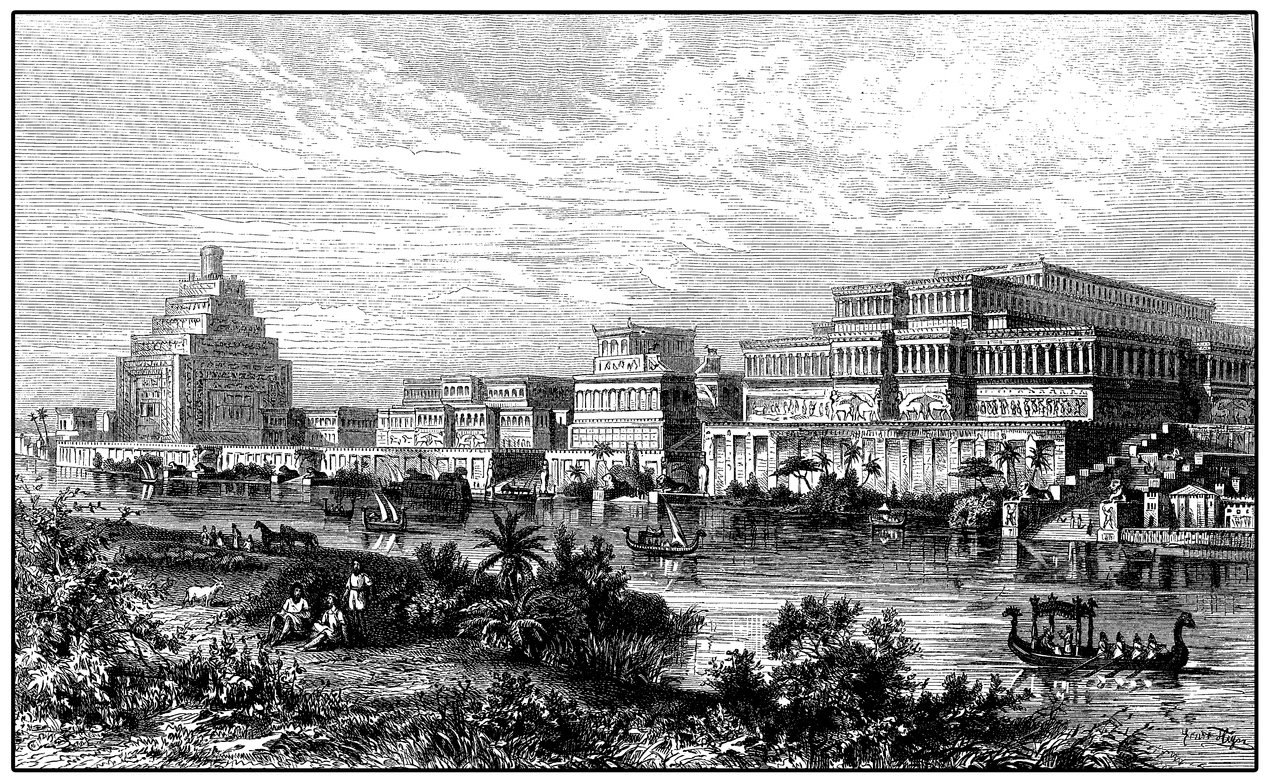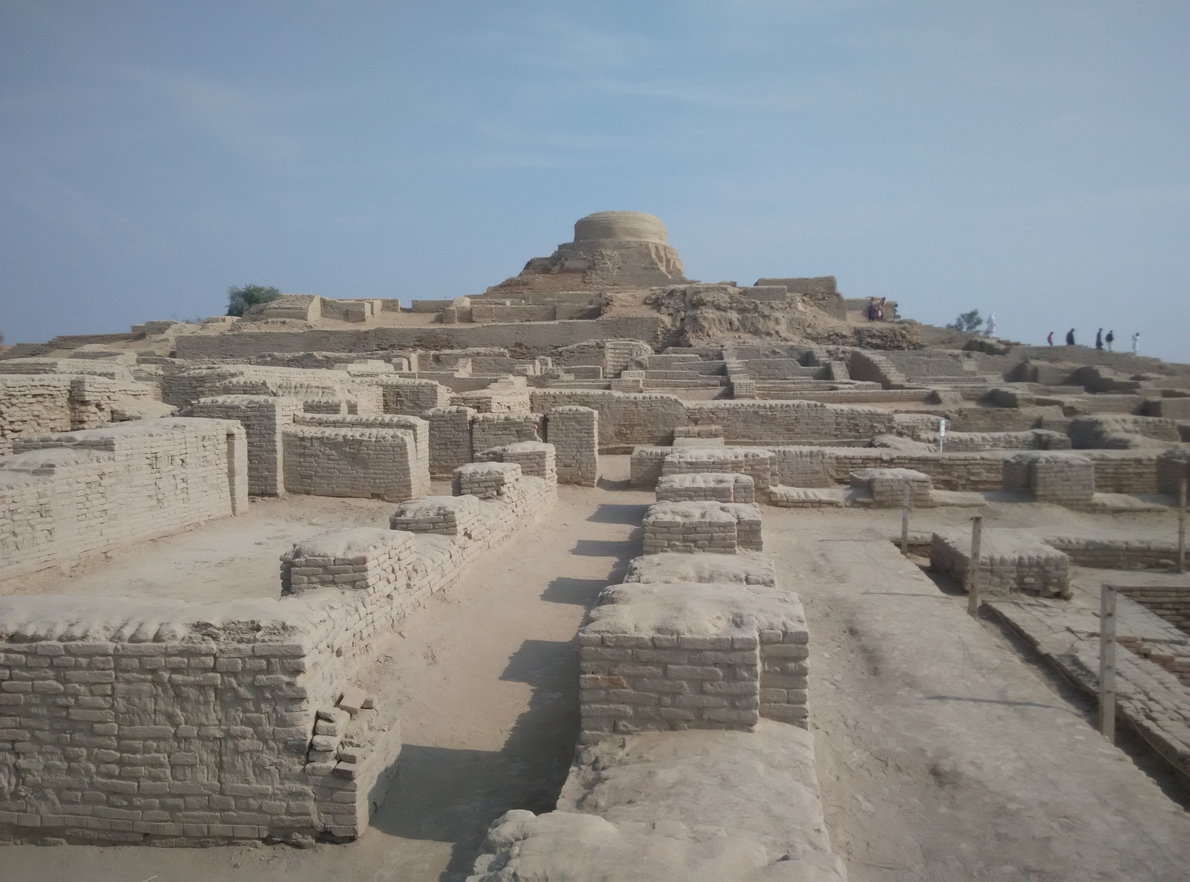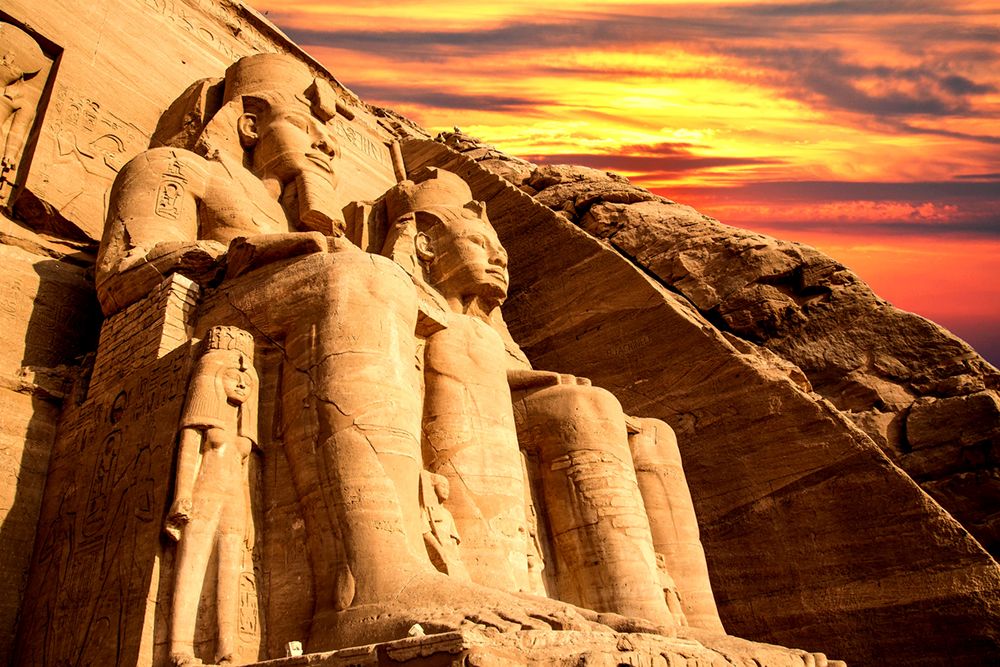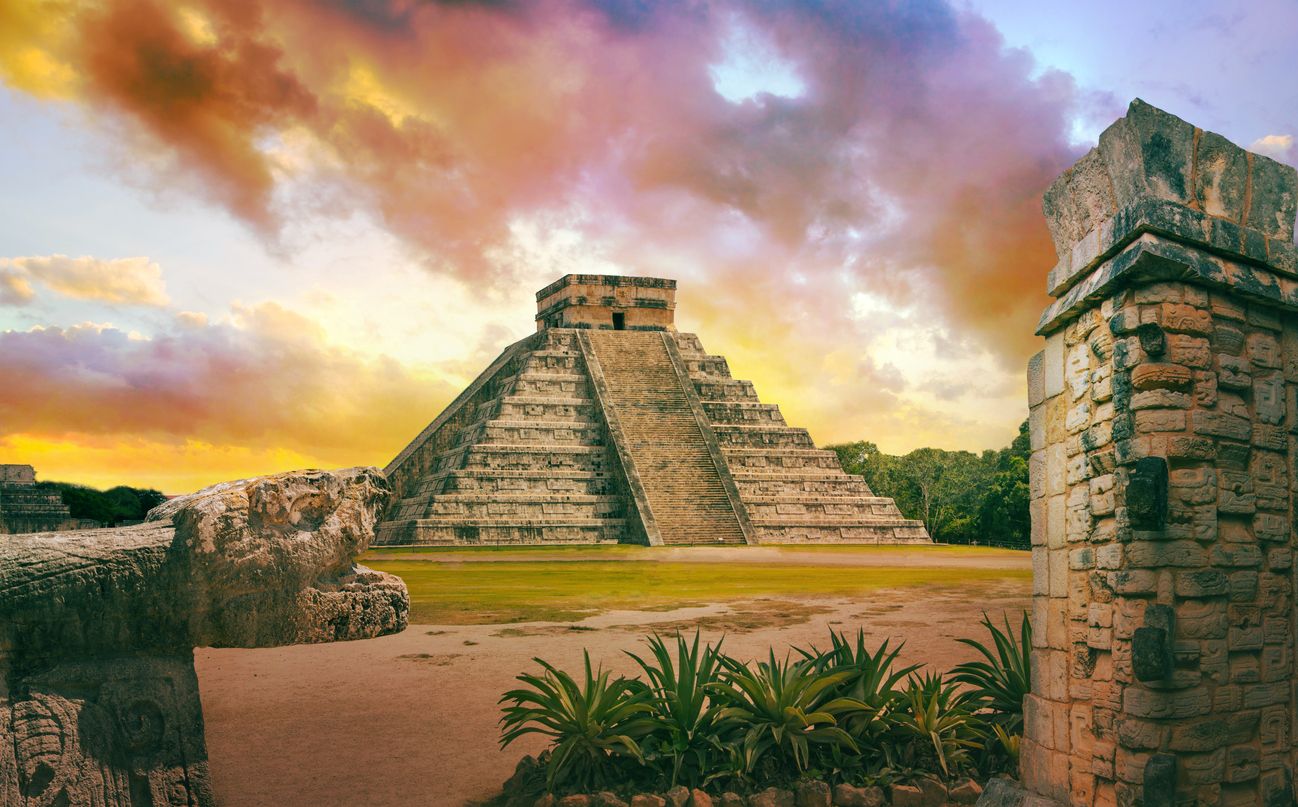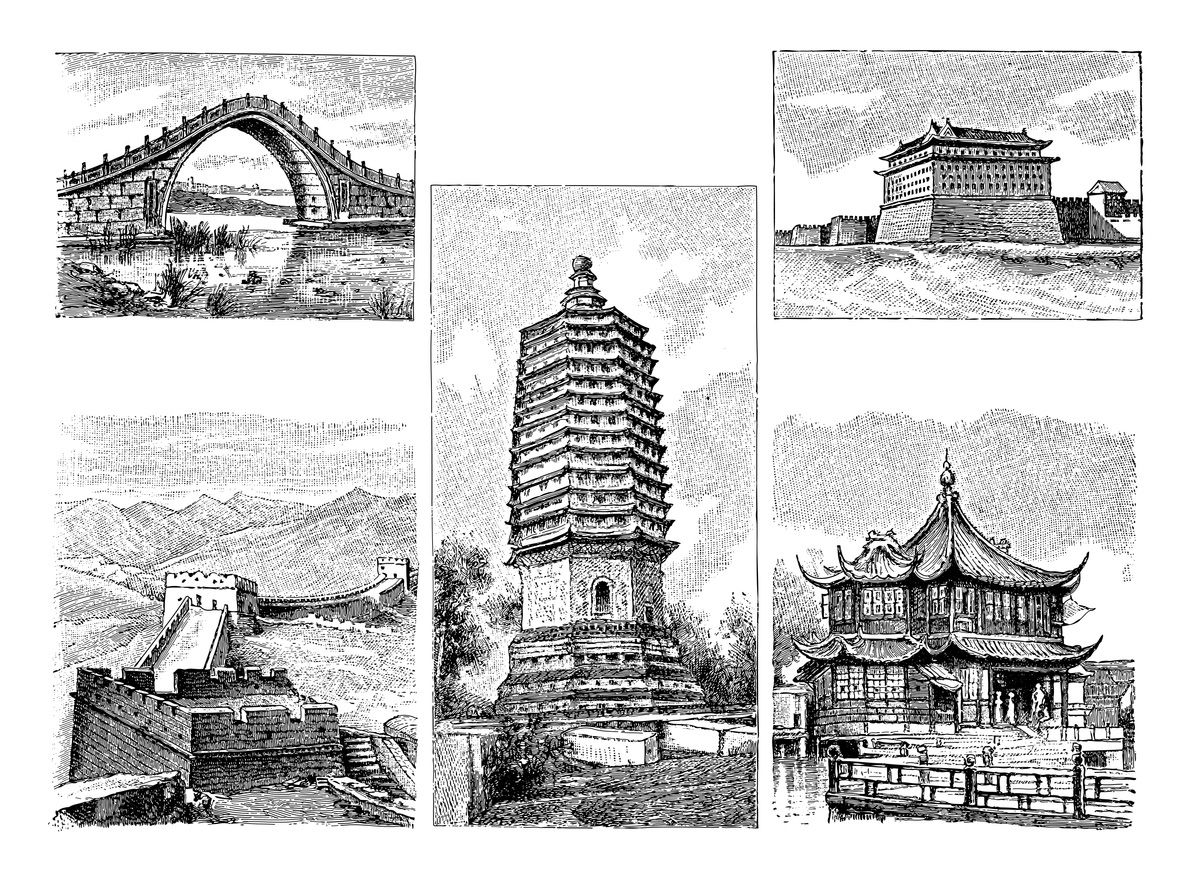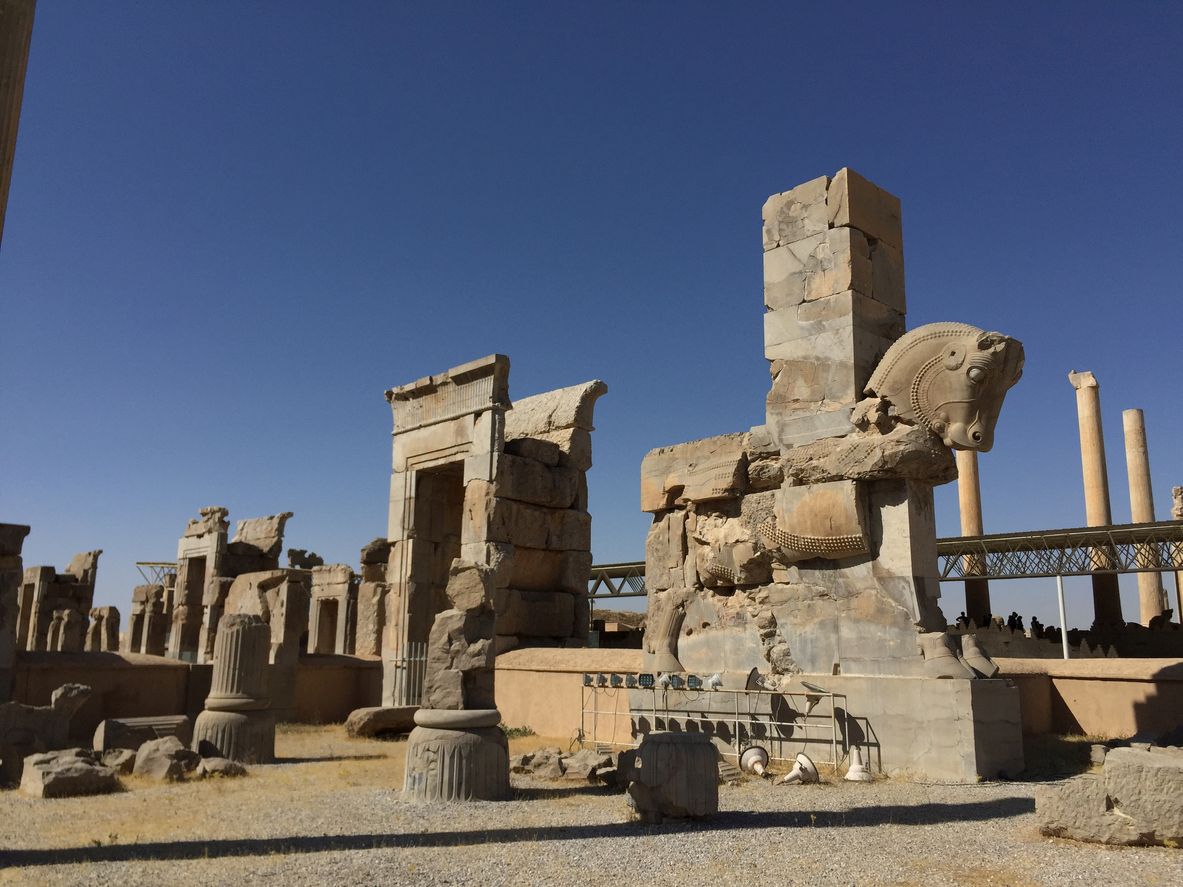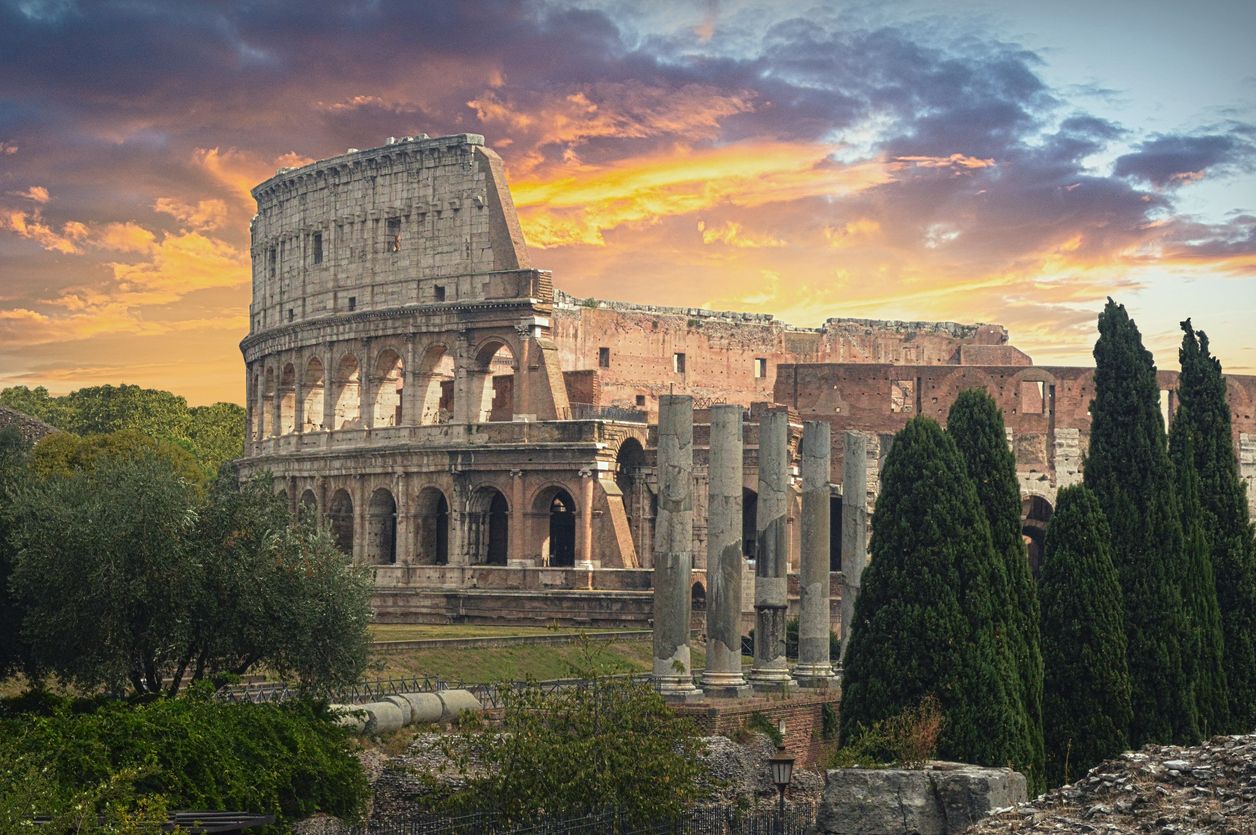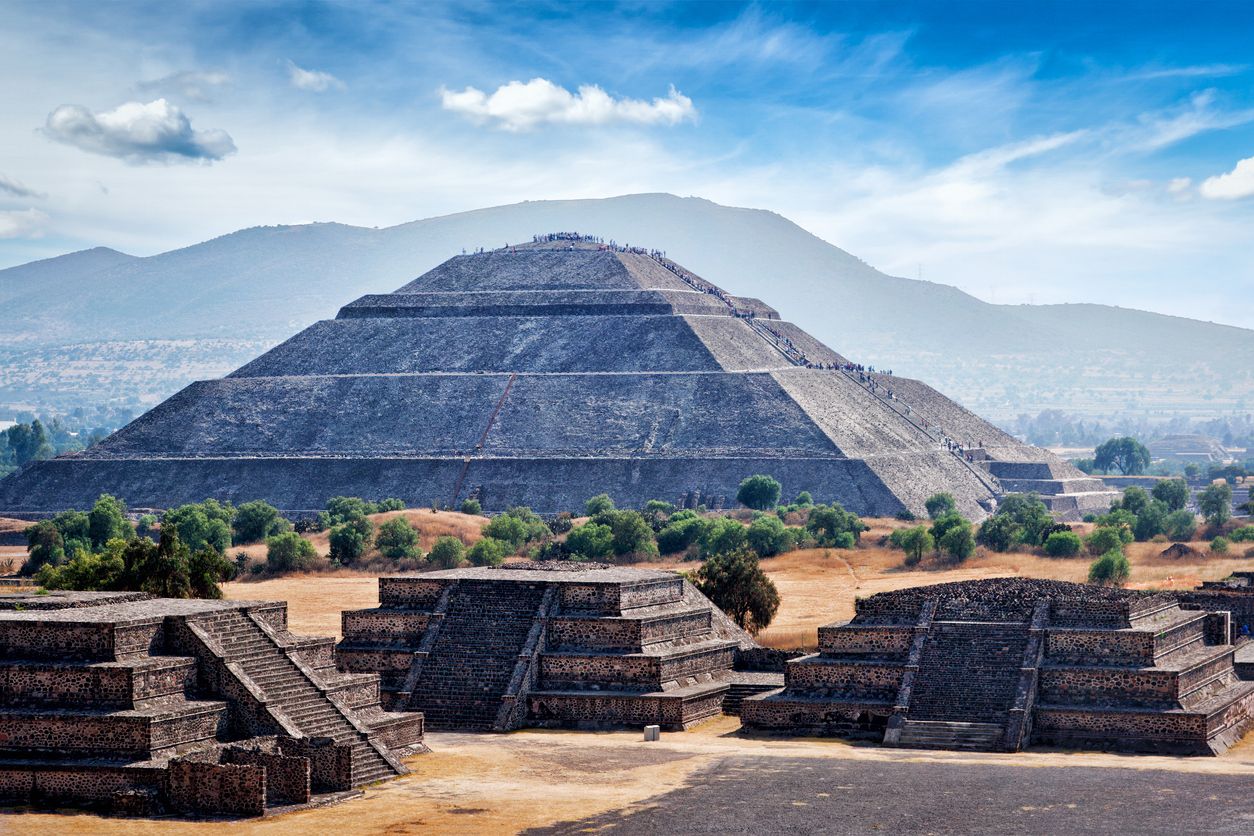Background
The meaning of civilization has changed numerous times during its history. In fact, even today, it is used in several ways. In general, the term civilization is used to define human cultures with a high level of social and technological development as opposed to what many people consider to be less advanced societies. However, this definition is quite unclear, subjective, and carries with it assumptions that were no longer accepted by up-to-date scholarship on how human societies have changed during their long past. [1]
The word civilization etymologically relates to the Latin word “civitas” or city, which is why it sometimes pertains to city state-level societies, setting aside the roaming people who lack a permanent settlement and those who live in areas that are not considered urban or do not have a state-level organization. The term is also sometimes used as a label for human societies that have attained a certain level of complexity. In a wide sense, it often means nearly the same thing as culture or even regional traditions, such as one or more separate states. In this sense, we can speak of the Egyptian civilization, Chinese civilization, and more. [1]
In this post, we are going to tackle the major civilizations in ancient times, such as the Mesopotamian, Indus Valley, Egyptian, Chinese, Mayan, Greek, Roman, Aztec, and Incan civilizations. These are ancient societies that have gained a reputation for their ingenuity and innovation. Read on and let us begin charting the rise and fall of these major civilizations.
Overview of The Major Civilizations
Thousands of years ago, humans traversed the planet to forage for food. Eventually, they made the decision to dedicate themselves to agriculture. With this, they spent a lot of time planting seeds, picking crops, and gathering the first food surpluses of the world. The security that they got from plentiful food supply allowed some of them to focus on converting small agricultural settlements into cities. They built temples and palaces and threw themselves into the growing endeavors of art, politics, and philosophy. [2]
There are many civilizations that have descended from ancient times, but ten of them are the most influential. Below are the major ancient civilizations.
1. The Mesopotamian Civilization
The Mesopotamian civilization was the first civilization to have ever emerged in the world. Its origin dates back so far that there is no known evidence of other civilized societies prior to them. The timeline of this ancient civilization is usually held to be from 3300 B.C. to 750 B.C. It is generally considered the first place where civilized society truly started to take shape. [3]
Ancient Sumer is an area in Mesopotamia that shares floodplains of the Tigris and Euphrates rivers. It was popular for fostering the first civilizations in human history. Sumerian cities such as Ur, Uruk, and Eridu had all the temple and palace complexes. They are also credited with inventing the written word, which was as many as 5,000 years ago. A writing system was scratched on clay tablets and was referred to as cuneiform. It allowed them to track the movement of grain throughout their territory, share myths and stories, as well as spread advice on agriculture and cooking. These innovations gave Mesopotamia the modern title, “Cradle of Civilization.” [2]
2. The Indus Valley Civilization
The Indus Valley Civilization is also among the oldest civilizations in the world. It lies at the very heart of subsequent civilizations that arose in the region of the Indus Valley. It flourished in areas extending from what we know today as northeast Afghanistan to Pakistan and northwest India. In the early civilizations of the ancient world, the Indus Valley Civilization was the most widespread, as it covered an area of 1.25 million kilometers or 7.7 million miles. [3]
The whole population of this civilization was settled in the Indus river basin, which is one of the major rivers in Asia, and also in another river called Ghaggar-Hakra, which used to flow through northeast India and eastern Pakistan. [3] The settlements of these civilizations were called Harappa and Mohenjo-Daro. These housed 40,000 to 50,000 individuals and featured baked-brick buildings. They had sophisticated sewer and water supply systems that kept their cities clean. They also had spacious streets that formed a strict grid structure, which suggests that these areas were planned well. [2]
3. The Ancient Egyptian Civilization
Ancient Egypt was among the oldest and most culturally rich civilizations in the world. The ancient Egyptian civilization is a regal civilization that was known for its phenomenal culture, lasting pyramids, pharaohs, and the Sphinx. The civilization was created around 3150 B.C., with the political union of Upper and Lower Egypt under the first pharaoh. However, this would not have been possible if no settlers had been around the Nile Valley in early 3500 B.C.
The history of ancient Egypt can be separated into a series of stable kingdoms separated by periods of relative instability referred to as intermediate periods. These include the Old Kingdom, the Middle Kingdom, and the New Kingdom of the Late Bronze Age. It was the Ancient Egyptian Civilization that gave the world the pyramids, the mummies that preserved the ancient pharaohs, hieroglyphics, and more. It was during the New Kingdom that ancient Egypt reached its pinnacle. [3]
4. The Mayan Civilization
Around 2600 B.C., the ancient Mayan civilization flourished in Central America. It was popular due to the calendar that they introduced. After it was established, the Mayan civilization prospered and became highly sophisticated. At its peak, it had a booming population of about 19 million. They had devised their own system of writing by 700 B.C., which they utilized in creating solar calendars carved in stone.
According to the Mayas, the world was created on August 11, 3114 B.C., which is the date from which their calendar starts. The theoretical end date was December 21, 2012. Compared to many of the modern civilizations, the ancient Mayans were ethnically rich as they constructed pyramids that were bigger than those in Egypt.
The sudden decline and unexpected end of the Mayans have been one of the most intriguing mysteries of ancient history. The question of why the Mayans, a remarkably sophisticated civilization composed of over 19 million people, suddenly fell during the 8th or 9th century still remains. But the Maya people did not disappear completely, and some of their descendants still live in parts of Central America. [3]
5. The Chinese Civilization
Ancient China is known as Han China, and it has one of the most diverse histories among the ancient civilizations. In fact, if you wish to learn about all the dynasties from the very first one to the very last that ever ruled China, a significantly very long period of time needs to be covered. [3]
The Yellow River Valley of China nurtured one of the oldest civilizations in the world. The kingdoms in the Chinese civilization evidently sustained themselves by divine decree. It was an idea that developed into the Mandate of Heaven. It is a political philosophy that encouraged rulers to act as stewards of their people and warned against bad behavior. [2] The Chinese had provided the world with some of its most useful inventions and products, including paper, printing, gunpowder, alcohol, cannons, the compass, and more. [3]
6. The Ancient Greek Civilization
The Ancient Greeks were not the initial civilization in the world, but they are undoubtedly among the most influential. The history of this civilization is stretched over a long period that historians divided into various periods. The most popular among those periods are the Archaic, Classical, and Hellenistic periods. During these times, a number of ancient Greeks became popular, and many of them changed the world forever.
One of the most prominent inventions in the ancient Greek civilization was the ancient Olympics. Aside from that, they also formed the concept of democracy and the Senate. This civilization laid the foundations for modern geometry, biology, and physics. Some of the most popular names in this civilization include Pythagoras, Socrates, Archimedes, Aristotle, Plato, Euclid, and Alexander the Great, which can be seen in history books because of their inventions, theories, beliefs, and heroics. [3]
7. The Persian Civilization
There was a time in history when the ancient Persian civilization was the most powerful empire in the world. However, it was only in power for a little more than 200 years. But in those years, they conquered lands that covered more than two million square miles. From the southerly parts of Egypt to parts of Greece and east to parts of India, this empire was popular for its wise rulers and military strength.
The whole Persian kingdom was unified by Cyrus the Great before going on to conquer ancient Babylon. His conquest was so fast that by the end of 533 B.C., he had invaded India in the far east. Even after the death of Cyrus, his descendants continued their ruthless expansion. They even fought in a legendary battle with the Spartans. Ancient Persia ruled over central Asia and Egypt. [3] However, everything changed when a legendary soldier of Macedon named Alexander the Great brought down the whole Persian Empire and ended the civilization in 330 B.C.
8. The Roman Civilization
It was around the 6th century B.C. when the Roman civilization emerged. However, the story behind the foundation of this ancient civilization was filled with legend and myths. At the height of the power of ancient Rome, it ruled over a big area of land, and all the present-day Mediterranean countries used to be part of it.
Kings governed early Rome, but after only seven of them had ruled, the people took control of their own city and ruled themselves. From that time on, Rome was referred to as the Roman Republic. Roman civilization also saw the rise and fall of some of the greatest emperors in history, including Augustus, Julius Caesar, and Trajan. However, the empire became so big that it was impossible to bring it under a single rule. In the end, it was overrun by millions of barbarians from the east and north of Europe. [3]
9. The Aztec Civilization
The Aztec civilization emerged around the same time when the Incans were appearing as powerful contenders in South America. In the 1200s and early 1300s, people in present-day Mexico lived in three big rival cities, namely Tenochtitlan, Texcoco, and Tlacopan. In 1325, these rivals made an alliance, and the new state came to dominate the Valley of Mexico. During those times, people chose the name Mexica over Aztecs.
The rise of the Aztecs was in a century of the fall of the Mayans. The military power base of the civilization was the city of Tenochtitlan, which became a spearhead for the conquest of new territory. However, its emperor did not rule every city directly. Local governments of the civilization stayed in place and were forced to pay different amounts of tribute to the Triple Alliance.
The Aztec civilization was at the top of its supremacy in the early 1500s. However, when the Spaniards came, it led to a huge battle between the Incas and the Spanish conquistadors and the native allies they had made led by the infamous Hernan Cortes in 1521. The defeat in this battle led to the fall of the Aztec Empire. [3]
10. The Inca Civilization
During the pre-Columbian era, the Incan Empire was the biggest empire in South America. It was a civilization that flourished in the areas of what we know today as Peru, Ecuador, and Chile. This civilization had its administrative, military, and political center at Cusco, which is located in modern-day Peru. It was a well-established and flourishing society. They were devout followers of the sun god Inti, and their king was called “Sapa Inca,” which means the child of the sun.
The first emperor of the Incan civilization was Pachacuti. He turned the capital from a modest village into a great city laid out in the shape of a puma. The emperor continued to expand the tradition of ancestor worship. When he died, his son got all the power, but his wealth was distributed among his other relatives. His mummy was preserved, and his political influence was maintained. This led to the rise in power of the Incas, who went on to become great builders. They constructed fortresses and sites like Machu Picchu that still stand at the present time. [3]
The Rise of the Major Civilizations
Let us take a look at the story behind how each of the major civilizations rose:
1. The Rise of the Mesopotamian Civilization
The very first civilization in the world began in the valley between the Tigris and Euphrates rivers called Mesopotamia, which is now known as Iraq. It is part of a larger region that historians refer to as the “Fertile Crescent,” which is a band of land that arches from the Mediterranean Sea to the Persian Gulf. The land was able to sustain an early civilization as it had rich soil and abundant crops. The waters of the rivers also enriched the land, which encouraged the people to settle and farm. [4]
Even though their area was hot and dry, the people in Mesopotamia learned how to water the land by getting water from the Tigris and Euphrates. This made it possible to grow crops regularly, which allowed farming settlements to flourish and food supplies to grow. In this area, great civilizations arose, which gave the Fertile Crescent the name “the Cradle of Civilization.”
2. The Rise of the Indus Valley Civilization
The Indus Valley Civilization was the earliest known urban culture of the Indian subcontinent. It is one of the earliest civilizations in the world, along with Mesopotamia and ancient Egypt. The Indus civilization started in the Indus River valley. It evolved from villages that used the Mesopotamian model of irrigated agriculture. It existed mainly by farming, accompanied by considerable but usually intangible commerce. [6]
At its peak, it may have had a population of more than five million people. Its cities were popular for their urban planning, which was a technical and political process concerned with the use of land and the design of the urban environment. In addition, the Indus Valley Civilization was also noted for its elaborate drainage systems, baked brick houses, water supply systems, and clusters of big, nonresidential buildings. [7]
3. The Rise of the Ancient Egyptian Civilization
The civilization of Ancient Egypt was among the earliest in the world. It is usually held to have started around 3000 B.C. when the lower Nile Valley became unified under a single ruler. During these times, the only other people in the world to have a literate, urban civilization were in Mesopotamia.
The river in the Nile Valley was flanked by lots of farming villages, which surrounded a dense network of irrigated fields. Large and well-planned towns with fortified walls and brick buildings began to appear. In the course of their work, they developed a range of capabilities that later would allow the civilization of ancient Egypt to flourish. [8]
4. The Rise of the Mayan Civilization
The Mayans started their evolutionary process in the Middle Pre-Classic period. They evolved over many different periods after that, including the Lithic, Archaic, Classic, Terminal Classic, Post-Classic, and Post-Conquest periods. Among these periods, the Classic and Post-Classic periods from around 300 A.D. to 900 A.D. are the most important, as these were the periods when the Mayans evolved.
The Mayan Civilization disappeared at the end of the Classic period and then reappeared to continue its rule in the Post-Classic period. In the Late Classic period, they had city-states that controlled territories. Their civilization also had many rulers that did many great things to influence and advance their civilization. [9]
5. The Rise of the Chinese Civilization
Ancient China is the time between the Neolithic period and the Han Dynasty, which is quite equivalent to the time of the Roman Empire in the West. These periods were the formative stage of Chinese civilization. The China that we know today developed from a group of isolated cultural communities to a set of organized states, which in the end, united around the idea of a single state. It started with the development of agriculture, which resulted in settled life and the production of surplus or stored goods.
The rise of civilization in China included a gradual process of organizing different groups around a set of common beliefs. They did it first by force and then by enunciating what it meant to be Chinese. [10]
6. The Rise of the Ancient Greek Civilization
The ancient Greek civilization flourished during the period that followed the Mycenaean civilization, or what is referred to as the Dark Age. As the early Greeks developed their shipbuilding skills and increased their communication ability through the sea, they became seafaring people. During these times, piracy became a common profession among Greeks. As they became wealthy due to piracy and seafaring trade, they used their riches to develop their cities. They built walled cities and improved their agricultural practices, which led to the generation of surplus supplies and trade with their neighbors. [12]
7. The Rise of the Persian Civilization
The Persian civilization first expanded under the leadership of Cyrus the Great. He utilized a strategy of religious and cultural toleration to maintain order. The empire was further expanded by Darius the Great. The increased wealth and power of the empire allowed him to create a brand new capital city called Persepolis. [14]
8. The Rise of the Roman Civilization
From being one of the many city-states in the Italian Peninsula, Rome became the center of the most powerful empire in the world between the 5th century B.C. and the first century A.D. During its Republican period, political offices and institutions were made to prevent anyone from becoming too powerful.
However, these systems began to break down in the first century B.C. Rome gained its empire in large part by extending some kind of citizenship to lots of people it conquered. Economic development was driven by military expansion, and it brought enslaved people back to Rome. This transformed the city of Rome and Roman culture. [16]
9. The Rise of the Aztec Civilization
The Aztecs were also referred to as Mexica or Tenochca. They used the language Nahuatl or Nahua, which was part of the Uto-Aztecan linguistic family that was influencing languages as far north as the Yellowstone River and as far south as Panama. The almost incredible story of a small wandering tribe that built an empire in one century, from the 14th century to the beginning of the 15th century, was due to three factors, which are the Aztec religion and the economy of the Valley of Mexico, and Aztec sociopolitical organization. [18]
10. The Rise of the Inca Civilization
The historical records of the rise of the Inca from total anonymity to imperial fame is an example of a rags-to-riches story. Even to this day, their achievements in economy, government, and architecture continue to resonate. The Inca civilization thrived in ancient Peru between 1400 and 1533 A.D. Their empire eventually stretched across western South America from Quito in the north to Santiago in the south. The Inca civilization was the largest empire ever seen in the Americas and the largest in the world at that time.
Fearless of the harsh Andean environment, the Incas conquered people and exploited landscapes in various settings, such as mountains, deserts, plains, and tropical jungles. They constructed finely-built and impressive buildings wherever they conquered. They adapted the natural landscapes spectacularly with terracing, highways, and mountaintop settlements. One of the sites they have built that continues to impress people today is Machu Picchu. [20]
The Fall of the Major Civilizations
Below are the reasons behind the fall of each major civilization:
1. The Fall of the Mesopotamian Civilization
According to studies, the ancient civilization that ruled Mesopotamia about 4,000 years ago was likely wiped out due to disastrous storms. Based on fossil coral records, there is evidence that frequent winter shamals or dust storms and prolonged cold winter season are some of the things that contributed to the collapse of the Mesopotamian civilization. [5] In 330 B.C., Mesopotamia fell to Alexander the Great and remained under Hellenistic rule for another two centuries.
2. The Fall of the Indus Valley Civilization
From 1900 to 1500 B.C., the Indus Valley civilization started to decline for unknown reasons. Back in the early 20th century C.E., it was thought to have been caused by an invasion of light-skinned people from the north known as Aryans, who conquered dark-skinned people called Dravidians. This was known as the Aryan Invasion Theory, which has been discredited. [7]
The real reason behind the decline and fall of the Indus Valley civilization is unknown, but according to scholars, it may also have to do with climate change, including the drying up of the Sarasvati River, a change in the path of the monsoon that watered the crops, overpopulation, and a decline in trade with Egypt and Mesopotamia. [6]
3. The Fall of the Ancient Egyptian Civilization
There are different dates given for the end of Ancient Egypt as a civilization. But based on studies, it was in 30 B.C. when it began to weaken, during the time when it was under the Ptolemies. But what really undermined the old religious establishment was the spread of Christianity within Egypt.
The new religion spread faster in Egypt than in most parts of the Empire. When Christianity became a legitimate religion in the Roman empire, many high-ranking people in Egypt became Christians or identified as such. The old priesthoods lost influence fast, along with the art, architecture, and hieroglyphic writing of Ancient Egypt. When Christianity became the official religion of the Roman empire in 391 C.E., the temples to the Egyptian gods were closed down. [8]
4. The Fall of the Mayan Civilization
The disappearance of the Mayan Civilization is among the most mysterious things in history for researchers today. During the Classic period, the Mayans disappeared mysteriously, which ended that period of Mayan rule. However, they mysteriously came back and repopulated the Yucatan. The reason behind their strange disappearance and reappearance is unclear, but there are many known reasons behind the decline and disappearance of civilization.
During the Classic period, the Yucatan started to get overpopulated. As a result, markets had to produce more food. However, the agricultural demands could not be fulfilled as the overpopulation took up almost all of the Yucatan Peninsula, and there was no space to grow food. In addition to that, several factors are also thought to have contributed to the fall of civilization. One of those is the occurrence of earthquakes that destroyed their villages. Another is the religious and superstitious beliefs, and lastly, the demands for agriculture made the soil dry, and soon, epidemic diseases spread fast throughout the Yucatan Peninsula, which killed many Mayans. [9]
5. The Fall of the Chinese Civilization
Ancient China used to be a strong and stable empire. However, it started to decline in the 1500s and continued until modern times. Some of the major reasons that contributed to its fall include an uprising against foreign control and the effect of a switch to democracy from a monarchy.
During the Ming dynasty, trade in China started to suffer due to its unwillingness to cooperate and allow the import of European goods. In short, the collapse of the powerful Chinese civilization was due to their reluctance to trade with foreigners, their failed attempt to rebel against European invasion, and the corruption of democracy meant to replace a monarchy. [11]
6. The Fall of the Ancient Greek Civilization
There were various factors that went into the decline and fall of the Ancient Greek civilization. One of those was when Greece was divided into city-states. Constant warring between these city-states weakened Greece and made it challenging to unite against a common enemy like Rome. Aside from that, the poorer classes in Greece started to rebel against the aristocracy and the wealthy. Also, even though Greek colonies had a similar culture, they were not strong allies to Greece or any of the city-states in the civilization. Lastly, Rome became powerful and stronger than the city-states of Greece. [13]
7. The Fall of the Persian Civilization
The Persian civilization fell after a series of tumultuous periods, which included an economic crisis, power struggle within the empire, bad governance, and the conquest by Alexander the Great. The decline of the civilization started around 480 B.C. under the rule of Darius’ son, Xerxes I. There were also several pitfalls that occurred in the administration of the empire after long periods of unparalleled success, which caused the eventual demise of Persia. [15]
8. The Fall of the Roman Civilization
There are several reasons behind the fall of the Roman civilization. One of the most straightforward theories, according to historians, is due to the invasions by Barbarian tribes. Rome had tangled with Germanic tribes for centuries, but by the 300s, barbarian groups such as the Goths had intruded beyond the borders of the empire. By 410, the Visigoth King Alaric successfully sacked the city of Rome. It was then attacked again in 455 by the Vandals. And finally, in 476 A.D., the Germanic leader Odoacer staged a revolution and overthrew Emperor Romulus Augustus, which caused the fall of Roman civilization.
Aside from that, some of the other possible causes of the fall of the Roman civilization include economic troubles and overreliance on slave labor, the rise of the Eastern Empire, overexpansion and overspending on the military, corruption, and the weakening of the Roman legions. [17]
9. The Fall of the Aztec Civilization
The Aztec civilization declined due to several reasons. One of those was the arrival of the Conquistadors. In 1519, Spanish conquistador Hernan Cortes arrived in Tabasco along with 11 ships, 100 sailors, and 500 soldiers. He was intent on taking over Tenochtitlan. He made the emperor his prisoner and took control of the city.
In addition to that, the growth of the Aztec Empire also came at a cost as political crises emerged. The Spanish also brought with them the smallpox disease, and the Aztecs had no immunity to European diseases. It spread among the people and reduced their population greatly. In the following years, the conquistadors brought the whole of the Aztec civilization under Spanish rule. [19]
10. The Fall of the Inca Civilization
In 1532, Spanish Conquistador Francisco Pizarro arrived in the Incan Empire. During that time, the Incas were fighting among themselves in a civil war between the two sons of the Inca ruler Wayna Qhapaq. Pizarro expertly convinced some of the groups created by civil unrest to turn against their own people. The Spaniards succeeded due to their manipulation of ideological power. Pizarro ruthlessly killed the Inca king in each region he conquered and took power held by Incan monarchs and gave it to the Spanish.
When the royals and the focus of worship of the Incas were destroyed, the majority of the population accepted Spanish rule readily. By 1572, the Spanish conquered the region completely and marked the end of the Inca civilization. [21]
Conclusion
Each of the major civilizations in ancient times indeed has rich and amazing stories to tell. It’s amazing to learn that thousands of years ago, these civilizations were able to create large cities and conquer many lands. In addition, these civilizations have contributed a lot to the knowledge and technologies that we have today. We hope this post helped you learn more about the rise and fall of major civilizations.
References
[1] Violatti, C. (2022, July 19). Civilization. World History Encyclopedia. Retrieved July 20, 2022, from https://www.worldhistory.org/civilization/
[2] Walters, S. (2021, December 1). 7 groundbreaking ancient civilizations that influence us today. Discover Magazine. Retrieved July 20, 2022, from https://www.discovermagazine.com/planet-earth/7-groundbreaking-ancient-civilizations-that-influence-us-today
[3] Adhikari, S. (2022, May 29). The 10 oldest ancient civilizations that have ever existed. Ancient History Lists. Retrieved July 20, 2022, from https://www.ancienthistorylists.com/ancient-civilizations/10-oldest-ancient-civilizations-ever-existed/
[4] ercsd.org. (2020). Civilization Begins in Mesopotamia. Retrieved July 21, 2022, from https://www.ercsd.org/site/handlers/filedownload.ashx?moduleinstanceid=195&dataid=2347&FileName=01-005—Early-Peoples–Civilization-Begins-in-Mesopotamia-handout.pdf
[5] Hokkaido University. (2019, October 24). Strong winter dust storms may have caused the collapse of the Akkadian empire. ScienceDaily. Retrieved July 21, 2022, from https://www.sciencedaily.com/releases/2019/10/191024093606.htm#:~:text=Summary%3A,ancient%20Akkadian%20Empire%20in%20Mesopotamia.
[6] Mark, J. J. (2022, July 19). Indus Valley Civilization. World History Encyclopedia. Retrieved July 21, 2022, from https://www.worldhistory.org/Indus_Valley_Civilization/
[7] Khan Academy, E. (2017). Indus River Valley Civilizations (article). Khan Academy. Retrieved July 21, 2022, from https://www.khanacademy.org/humanities/world-history/world-history-beginnings/ancient-india/a/the-indus-river-valley-civilizations
[8] TimeMaps, E. (2021, June 14). Ancient egypt: Location, history and Civilization. TimeMaps. Retrieved July 21, 2022, from https://www.timemaps.com/civilizations/ancient-egypt/
[9] Anderson, W. (2020). Mayan civilization: The rise and fall. SchoolWorkHelper. Retrieved July 21, 2022, from https://schoolworkhelper.net/mayan-civilization-the-rise-and-fall/
[10] Khan Academy, E. (2015). An introduction to ancient China (article). Khan Academy. Retrieved July 21, 2022, from https://www.khanacademy.org/humanities/art-asia/imperial-china/neolithic-art-china/a/an-introduction-to-ancient-china
[11] Sophia, D. (2011, March 3). The Fall of the Chinese Empire. Teen Ink. Retrieved July 21, 2022, from https://www.teenink.com/nonfiction/academic/article/301359/The-Fall-of-the-Chinese-Empire
[12] Oat, L. (2020, September 14). How did the ancient Greeks become so powerful? Medium. Retrieved July 21, 2022, from https://lutheroat.medium.com/how-did-the-ancient-greeks-become-so-powerful-59a892932962
[13] Ducksters, E. (2022). Ancient Greece. Ducksters. Retrieved July 21, 2022, from https://www.ducksters.com/history/ancient_greece/decline_and_fall_of_ancient_greece.php
[14] Khan Academy, E. (2017). The Rise of Persia (article). Khan Academy. Retrieved July 21, 2022, from https://www.khanacademy.org/humanities/world-history/ancient-medieval/ancient-persia/a/the-rise-of-persia
[15] Joe, J. (2022, January 11). Why did the Persian Empire Fall: An insight to the various causes. Timeless Myths. Retrieved July 21, 2022, from https://www.timelessmyths.com/history/why-did-the-persian-empire-fall/
[16] Khan Academy, E. (2018). The Roman Republic (article) | Rise of Rome. Khan Academy. Retrieved July 21, 2022, from https://www.khanacademy.org/humanities/world-history/ancient-medieval/roman-empire/a/roman-republic
[17] Andrews, E. (2014, January 14). 8 reasons why Rome fell. History.com. Retrieved July 21, 2022, from https://www.history.com/news/8-reasons-why-rome-fell
[18] Britannica, E. (2020). The rise of the Aztecs. Encyclopædia Britannica. Retrieved July 21, 2022, from https://www.britannica.com/place/Mexico/The-rise-of-the-Aztecs
[19] Britannica, E. (2020, August 28). Decline of the Aztec empire. Encyclopædia Britannica. Retrieved July 21, 2022, from https://www.britannica.com/summary/Decline-of-the-Aztec-Empire
[20] Cartwright, M. (2022, July 18). Inca civilization. World History Encyclopedia. Retrieved July 21, 2022, from https://www.worldhistory.org/Inca_Civilization/
[21] Penner, H. (2021, July 30). The fall of the Incas: A historical look at power struggles. USU. Retrieved July 21, 2022, from ahttps://chass.usu.edu/international-studies/aggies-go/news/the-fall-of-the-incas


